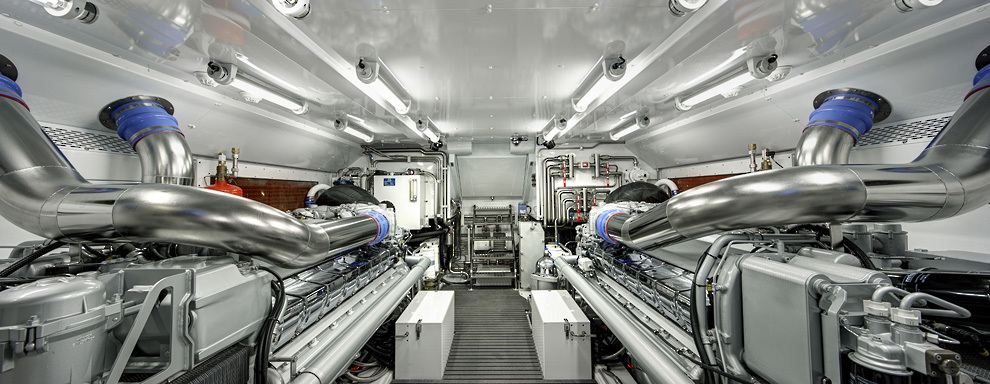In this crew Q&A, we’re catching up with yacht engineer, Jonathan Lillicrap. Johnathan has had over 10 years experience as a yacht engineer and currently works as the chief engineer onboard a 60m+ motor yacht. He was originally an apprentice in Marine Systems Engineering at Alloy Yachts. Below, we’re discussing all things related to crewing and Superyacht engine rooms.

What made you want to become a yacht engineer, and how did you get into the Superyacht industry?
After completing my 4 year Marine Systems Engineering apprenticeship with Alloy Yachts (boatbuilding) in New Zealand, I wanted to take the skills, I had learnt and apply them whilst working on yachts at sea.
How do you organise and structure your work day onboard, and what is the hardest engineering challenge you have encountered onboard yachts?
A structured day for me looks like: Between the planned maintenance system, work lists and breakdowns (if any), I always make sure to prioritise the items with the second engineer onboard.
I would say that one of the hardest engineering challenges I’ve faced so far as a yacht engineer would have to be, organising and carrying out a 10-year survey, including an installation of a ballast water treatment plant amongst many other large refit items.
What is the best and worst part of your job as a Superyacht engineer?
Best = Working with like-minded people and successfully achieving a common goal.
Worst = Being away from friends/family for long durations of time and maintaining a normal at-home life.
READ MORE: How to Become A Yacht Engineer
Has technology helped improve your job onboard?
Most definitely! For example, logbooks & maintenance systems are now digital.
Do you do anything onboard to help improve sustainability onboard?
In terms of sustainability for the crew, the Captains are constantly monitoring the well-being of the yacht crew, from junior crew to senior. They’re ensuring they are not getting burnt out; over the years, more frequent rotations have been implemented for the well-being of the crew.
As for the environment, we are constantly maintaining the highest standards, including following MARPOL to ensure minimal impact on the Environment. For those who are unsure, MARPOL the main international convention covering prevention of pollution of the marine environment by ships from operational or accidental causes.
READ MORE: Why Superyacht Engineers Should Aim to Lead the Drive for Sustainability
What is the main tip you would give a new yacht engineer who’s just starting in the industry?
Good things take time! Come up with a plan and stick with it. It can take a good 5-10 years to successfully get to a comfortable position in the yachting industry. And of course, have fun along the way.
One piece of feedback you would love to give to a yacht designer about engine rooms:
For them to consider the servicing that needs to be carried out for the next 10 years. There is nothing worse than not being able to access a commonly serviced piece of equipment. This is very common on vessels, especially ones not built in Northern Europe.
How do you think the future of crewing will look onboard yachts, especially for a yacht engineer?
One thing I have noticed is that Salaries have not changed since I joined yachting, in New Zealand; during this time, the minimum wage has almost doubled, keeping up with inflation & the cost of living. This, of course, will have a knock-on effect on the crew members from high-income countries over time.
For more Superyacht Content crewmess articles, click here













.gif)






